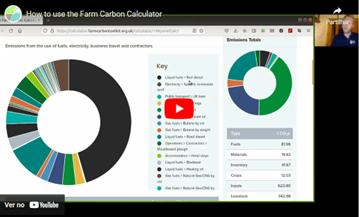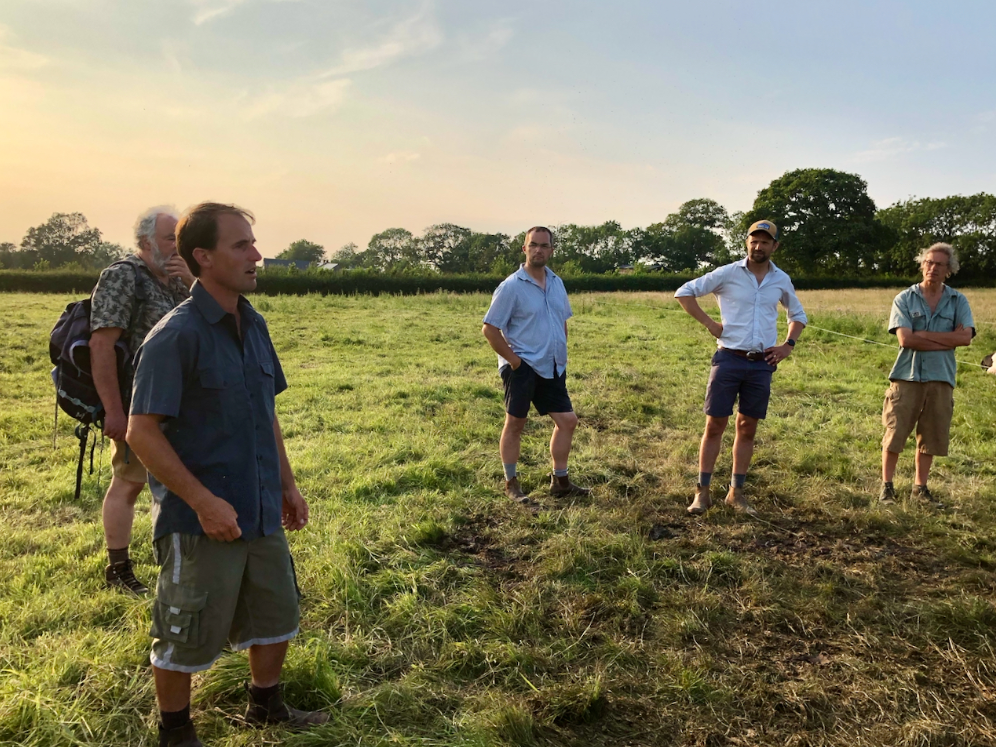Introduction to the challenge addressed
Farming systems produce greenhouse gas (GHG) emissions, primarily in the form of methane (mostly caused by animal digestion and respiration) and nitrous oxide. Trees, plants, grasses and soils take up carbon dioxide from the atmosphere and use it to grow.
The Emissions Trading System is a major tool of the European Union in its efforts to meet emissions reductions targets now and into the future. The trading approach helps to combat climate change in a cost-effective and economically efficient manner.
Farmers in general and particularly livestock farmers are part of the system and it is important to have tools to monitor and calculate the carbon balance of their farm.
Description of Good Practice
Globally there are several tools to calculate the carbon balance of farms and some even work online. Farm Carbon Calculator is an online tool, with 1, 2 and 3 scopes, meaning it is comprehensive and covers direct and indirect emissions. In IPCC Livestock calculations it covers Tiers 1 and 2. Tier 1 is the basic method, frequently utilizing IPCC recommended country-level defaults, while Tier's 2 and 3 are each more demanding in terms of complexity and data requirements. With this wider scope the Farm Carbon Calculator is far more comprehensive and accurate for the user. The Calculator can be used by farmers and growers with livestock, arable, horticulture, etc. This includes farms on any scale, soil type or place in the UK. Using this tool requires a lot of organized information about the farm that must be uploaded to the platform, which can take some time to start up. Once the farmer has the necessary data, filling it in is straight forward, between around 30 mins and 2 hours. The Farm Carbon Calculator is free for all farmers and growers who are not using it for directly profitable purposes. Each farm needs to enter data its business, and through the Calculator will convert this in to a carbon footprint. To be able to do this the farmer has the support of a video and an instruction manual. There is the need for details about the following areas of each farm:
- Fuels, electricity and business travel;
- Materials, machinery and buildings;
- Cropping and fertility;
- Livestock;
- Inputs (fertilisers and sprays);
- Waste and recycling;
- Distribution;
- Carbon sequestration in soils and biomass.
Impact on farm performance
This tool provides reports on farm activities which can be useful for the farmer to understand which processes he can improve in order to have a more environmentally sustainable result. Considering that the next CAP period will include support for the implementation of environmental measures (eco-schemes) the use of such a tool will be of extreme importance.
When creating a new Carbon Report with this tool, it is asked to choose a Business Type. It can become clear what the carbon balance of each activity on the farm is, and the farmer can evaluate the data and generate reference value-adds for his products. Furthermore, the farmer can better analyse where his farm stands in the EU Emissions Trading System market and take advantage of it.
Audio-visual material
How to use the Farm Carbon Calculator (click on the image to see the video)
Farmer comment
Livestock Soil Farmer of the Year Farm Walk with Sam Vincent (click on the image to read it)
Further information
Farm Carbon Calculator
https://calculator.farmcarbontoolkit.org.uk/
Farm Carbon Toolkit
https://farmcarbontoolkit.org.uk/
Methodology of the Farm Carbon Calculator
EU Emissions Trading System (EU ETS)
https://climate.ec.europa.eu/eu-action/eu-emissions-trading-system-eu-ets_en

